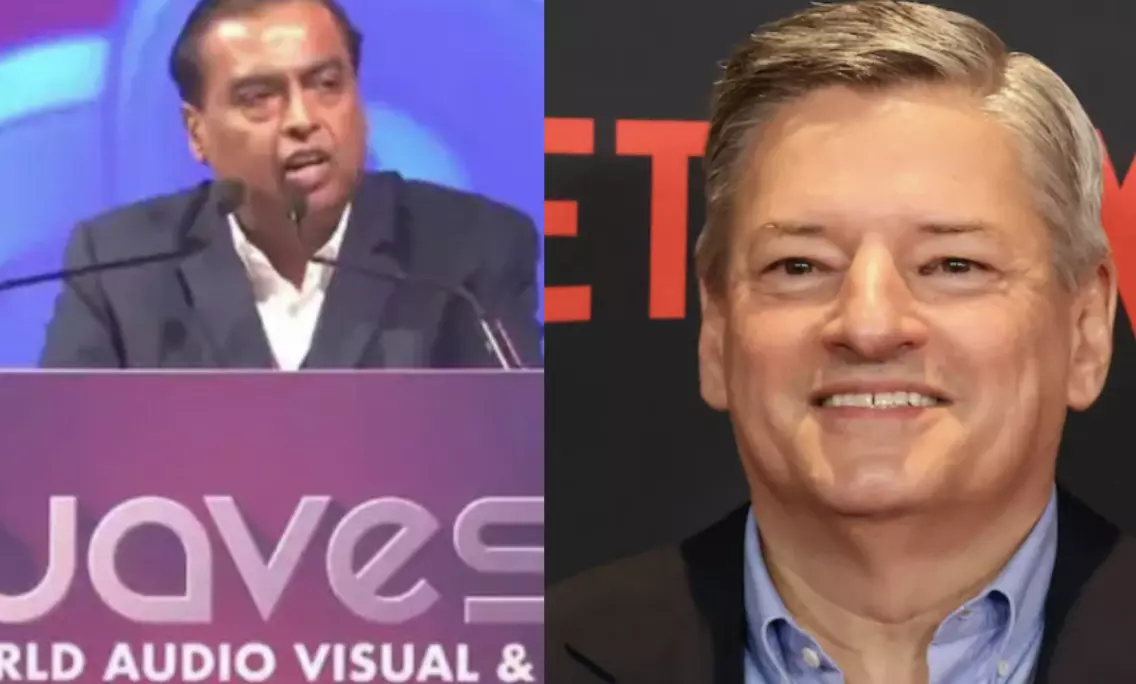Netflix vs Jio: India becomes the global stage for the OTT power battle
Netflix vs Jio: India becomes the global stage for the OTT power battle

India’s digital entertainment space just got supercharged. At the WAVES 2025 Summit in Mumbai, two giants—Mukesh Ambani’s Reliance and streaming heavyweight Netflix—unveiled bold, clashing visions for India’s OTT future.
Ambani’s $100 Billion Media Moonshot
Mukesh Ambani dropped a bombshell—he’s aiming to build a $100 billion media empire, with JioHotstar at the heart of it. This new mega-platform is the result of a merger between JioCinema and Disney+ Hotstar. With control over content, devices, broadband, and telecom, Reliance is positioning itself as the all-in-one entertainment pipeline for India.
Bundled with Jio’s telecom and fiber plans, JioHotstar offers users everything from cricket matches to Disney classics to local originals—all without them even needing to sign up separately. It’s scale, reach, and convenience—at Reliance speed.
Netflix’s $50 Million Countermove: Betting on Indian Creators
Just as the dust was settling, Netflix responded with its own power play: a $50 million co-production fund for Indian creators—its biggest local investment to date. The focus? Tapping into India’s regional stories, languages, and creators to build globally appealing content.
From Tamil sci-fi thrillers to animated series based on Kerala folklore, Netflix’s new lineup is rich, diverse, and globally ambitious. The platform is also partnering with Adobe to train local creators in AI-led animation to streamline costs and boost quality.
Two Different Paths, One Big Goal: IP Dominance
Both Reliance and Netflix are chasing the same thing: Indian-origin IP with worldwide appeal.
Reliance has the distribution game on lockdown—telecom, streaming, data, ads, and more. JioHotstar is positioned to be a content super-app integrated across devices and services. Its strength lies in mass access and monetization layers like ads, shopping, and gaming.
Netflix, meanwhile, is creator-first. It wants to build deep relationships with storytellers and bring regional Indian stories to the world, just like it did with Korean dramas and Spanish thrillers.
India: Not Just a Viewer Market Anymore
With nearly 80% of OTT content now consumed in non-Hindi languages, both platforms are doubling down on regional-first strategies. India is no longer just about gaining subscribers—it's about exporting ideas, formats, and IP to global audiences.
The stakes are high. The Indian media and entertainment industry is worth over $34 billion, and most of the new growth is digital and regional—not TV or print. The next five years could determine whether India simply watches global content or becomes a global content creator itself.
Final Take: A Clash of Titans
Reliance: Infrastructure-first. Owns distribution, content, data, and monetization. Aims to scale fast, wide, and deep.
Netflix: Content-first. Builds global stories from the grassroots. Bets big on creator ecosystems.
India’s OTT space is big enough for both models—but exclusivity, speed, and scale will define the winner.

